Blending the old with the new often leads to breathtaking results, especially in interior design. Imagine combining the functional minimalism of Bauhaus with the ornate opulence of Art Deco. This hybrid interior design style promises a home that is both uniquely modern and nostalgically elegant. For enthusiasts looking to infuse their spaces with a blend of history and contemporary flair, mixing Bauhaus and Art Deco offers an exciting challenge. This post will guide you through the nuances of these two iconic styles and how to harmoniously merge them into your home, crafting a living space that is not just a house, but a conversation piece.
Section 1: Understanding Bauhaus and Art Deco
Bauhaus: The Functionality in Simplicity

The Bauhaus movement, emerging in Germany in the early 20th century, revolutionized the design and architectural world with its stark simplicity and focus on functionality. Founded by Walter Gropius, Bauhaus sought to create a ‘total’ work of art where all arts, including architecture, would eventually be brought together. The key characteristics of Bauhaus design include:
- Function Over Form: Bauhaus designers believed that the purpose of an object should dictate its design. This led to a minimalist aesthetic with clean lines and absence of unnecessary embellishments.
- Geometric Shapes: The use of primary shapes like rectangles, circles, and triangles is predominant in Bauhaus design. This geometric simplicity offered a visual representation of the movement’s emphasis on function.
- Material Innovation: Bauhaus was ahead of its time in experimenting with industrial materials like steel, glass, and concrete, which were not commonly used in domestic spaces back then.
Art Deco: The Luxury of Ornamentation
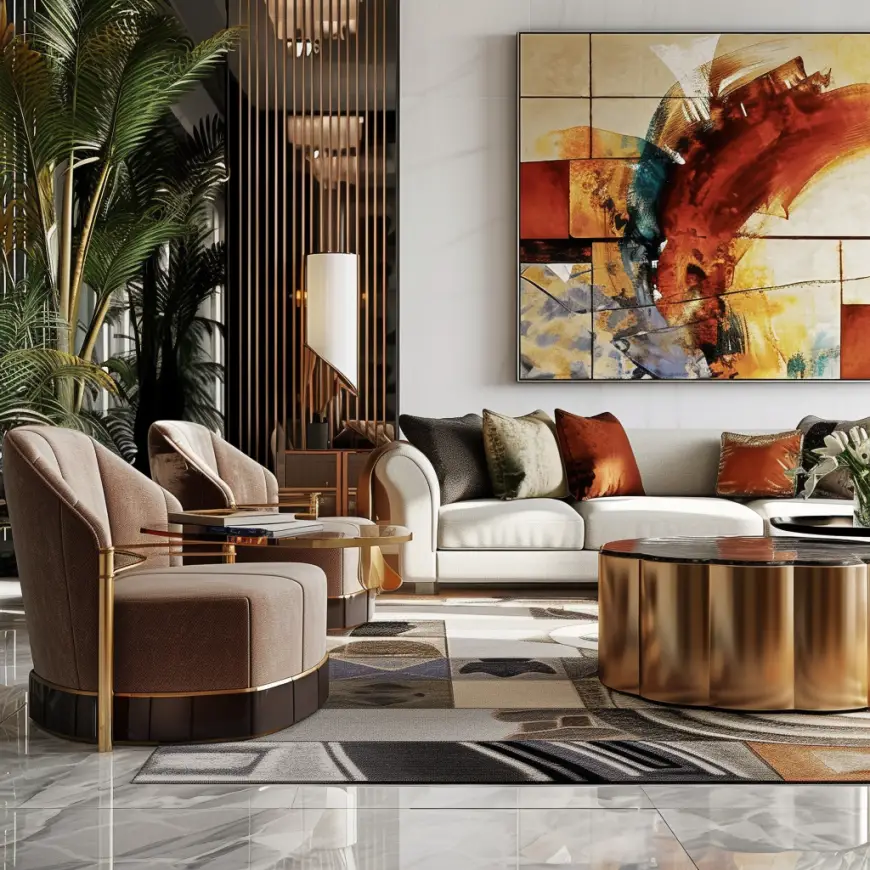
In contrast, Art Deco, which originated in France in the 1920s, is all about luxury, glamour, and exuberance. This style became popular globally in the 1930s and 1940s, representing opulence and sophistication. Art Deco’s key characteristics include:
- Ornamental and Bold: Art Deco is known for its lavish ornamentation. It features rich colors, bold geometric patterns, and lavish ornamentation.
- Exotic and Fine Materials: The use of rare and expensive materials such as ivory, mahogany, and silk was common, reflecting the style’s luxurious nature.
- Influence of Ancient Cultures: Egyptian, African, and Aztec cultures profoundly influenced Art Deco, as seen in its use of ziggurat shapes, fanned motifs, and stylized animal forms.
Complementing Contrasts
While Bauhaus champions minimalism and functionality, Art Deco epitomizes luxury and ornate design. At first glance, these styles may seem poles apart. However, their contrasting natures provide a unique opportunity to create a balanced and dynamic interior design. By understanding the essence of each style, designers can blend the unembellished elegance of Bauhaus with the lavish intricacies of Art Deco, crafting spaces that are both practical and luxurious.
Section 2: Principles of Blending Styles Harmonizing Bauhaus and Art Deco
When mixing two distinct interior design styles like Bauhaus and Art Deco, the key is to find a balance that respects the essence of both while creating a cohesive look. Here are some strategies to achieve this harmony:
- Start with a Neutral Base: Begin with a neutral color palette derived from the Bauhaus style. This acts as a canvas, allowing for the integration of Art Deco’s more vibrant and rich tones in furniture or accent pieces.
- Balance in Proportions: Pay attention to the scale and proportion of the space. Use Bauhaus’s streamlined furniture to create a sense of space and simplicity, then accent these pieces with Art Deco’s ornamental details like patterned throw pillows or elegant vases.
- Focal Points: Designate focal points in your room where Art Deco’s flamboyance can shine, such as an opulent chandelier or a boldly patterned Art Deco wallpaper. Surround these with more subdued Bauhaus elements to avoid overwhelming the space.
- Material Mix: Combine the industrial materials typical of Bauhaus, like steel and glass, with the luxurious textures of Art Deco, such as velvet and brass. This juxtaposition creates an intriguing tactile experience.
- Artistic Accents: Utilize artwork to bridge the two styles. Abstract geometric prints can echo both the Bauhaus’s love for geometry and the Art Deco’s penchant for dramatic shapes.
- Consistent Theme: While mixing elements, maintain a consistent theme, whether it’s a specific color scheme, a pattern type, or a material, to ensure the space feels unified.
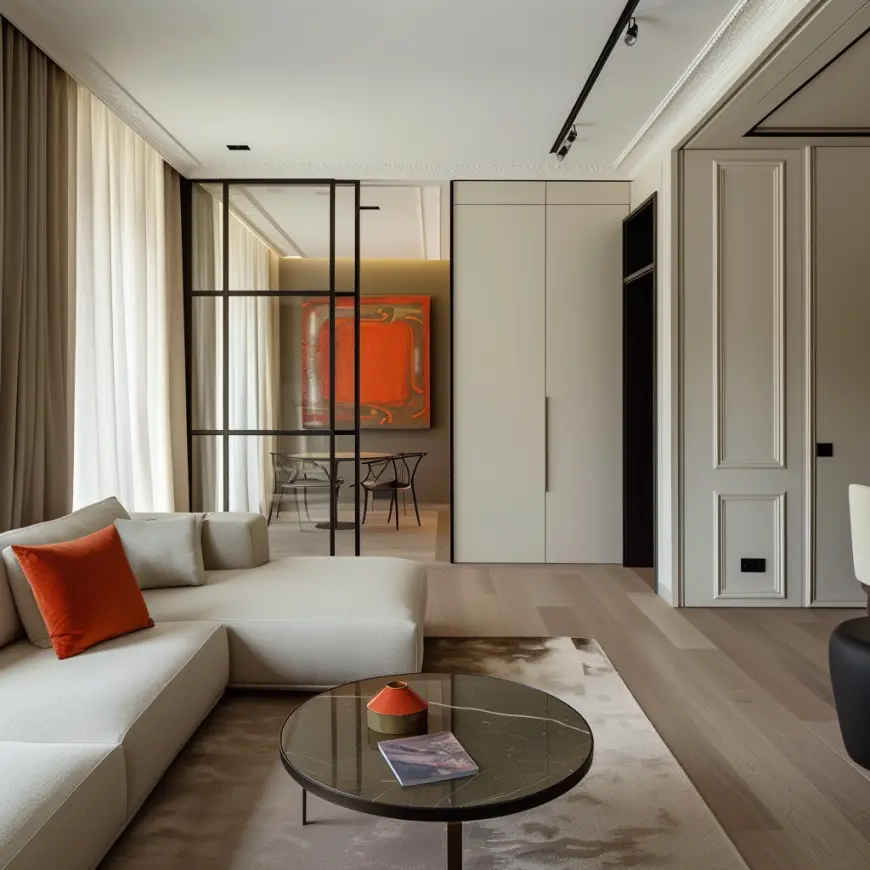
Creating a Cohesive Space
The beauty of combining Bauhaus and Art Deco lies in the dialogue between the understated and the extravagant. It’s about creating spaces that feel thoughtfully curated and layered, reflecting a deep understanding of both styles. The goal is not to create a 50/50 split but to allow each style to complement and enhance the other.
Section 3: The Hybrid Approach – Bauhaus Meets Art Deco
Color and Texture: A Palette of Elegance and Simplicity
- Balancing Tones: Start with the Bauhaus palette of neutral and monochromatic tones. These serve as a perfect backdrop for introducing Art Deco’s vibrant and rich colors like gold, emerald green, or navy blue. This balance ensures that the space feels neither too stark nor too overwhelming.
- Textures: Mix the smooth, industrial textures typical of Bauhaus design (think chrome, glass, and steel) with the luxurious fabrics and finishes of Art Deco (like velvet, silk, and polished wood). This creates a tactile experience that’s both modern and sumptuous.
Furniture and Decor: Merging Function with Opulence
- Furniture Selection: Choose furniture pieces that exemplify the Bauhaus’s functionality and simplicity. Look for streamlined shapes with minimal ornamentation. Accent these pieces with Art Deco-inspired details – maybe a velvet-upholstered Bauhaus chair or a sleek coffee table with ornate Art Deco-style brass legs.
- Decorative Elements: Incorporate Art Deco’s love for geometric patterns and symmetrical designs in smaller decor items like cushions, rugs, or wall art. This will add a touch of luxury without overpowering the minimalist Bauhaus aesthetic.
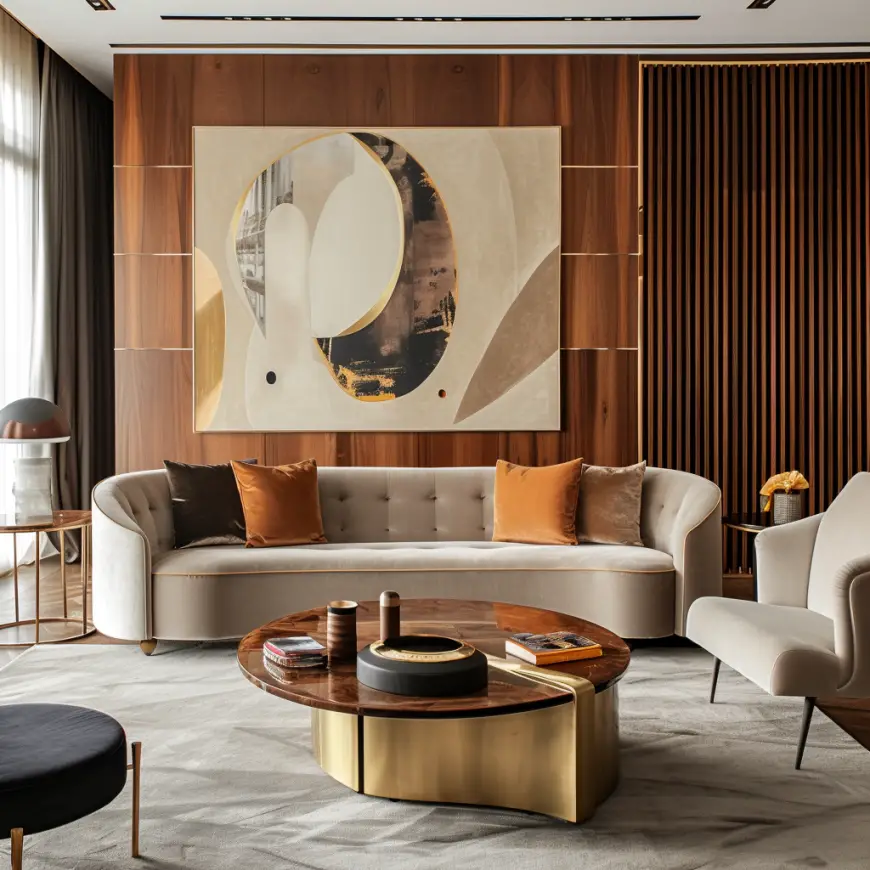
Space and Layout: Organized Elegance
- Functional Layout: Embrace the Bauhaus principle of functional spaces. Design your layout to be practical and user-friendly, with clear lines and uncluttered surfaces.
- Art Deco Accents: Within this functional layout, introduce Art Deco elements to add character. Think of an Art Deco mirror in a Bauhaus-style room or a statement Art Deco light fixture above a minimalist dining table.
Lighting and Accessories: The Finishing Touches
- Lighting: Lighting is a crucial aspect where both styles can converge beautifully. Sleek, Bauhaus-inspired floor lamps can be paired with Art Deco chandeliers or wall sconces featuring geometric patterns and luxurious materials.
- Accessories: Use accessories to subtly nod to both styles. Bauhaus-inspired abstract art can hang alongside Art Deco ornamental pieces. Even everyday items like clocks or kitchenware can be chosen to reflect the hybrid style.

Creating a home interior that skillfully mixes Bauhaus’s functional minimalism with Art Deco’s ornate luxury requires a delicate balance. By thoughtfully selecting colors, textures, furniture, and decor that reflect both styles, you can create a living space that is both harmonious and visually stunning.
Section 4: Case Studies and Real-Life Examples
Case Study 1: A Modern City Apartment
- Overview: A compact city apartment where space is at a premium, designed to blend Bauhaus’s functionalism with Art Deco’s glamour.
- Design Elements:
- A neutral color palette with bursts of Art Deco gold and emerald green.
- Bauhaus-style modular furniture complemented with Art Deco decorative pillows and throws.
- Geometric Art Deco wallpaper in a small focal area, balanced with minimalist Bauhaus lighting.
- Outcome: The apartment is a model of efficiency, adorned with luxurious accents, showcasing how small spaces can embody both styles without feeling cluttered.
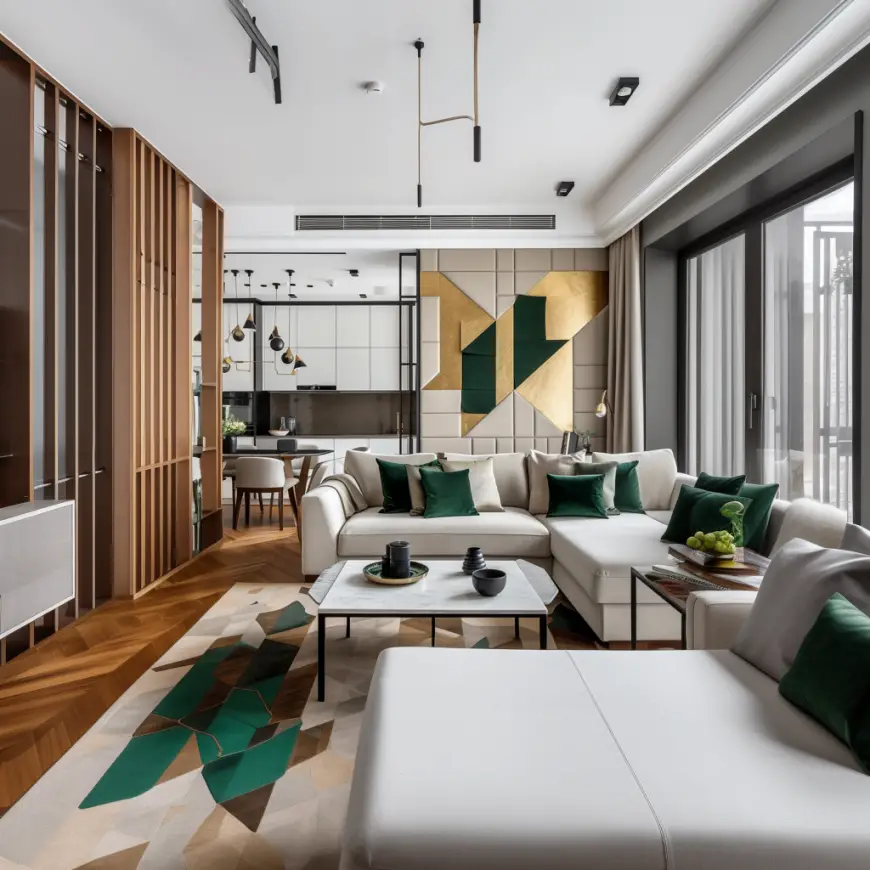

Case Study 2: A Spacious Suburban Home
- Overview: A larger home with more room to experiment, this space uses Bauhaus and Art Deco elements to create a seamless flow from room to room.
- Design Elements:
- Open-plan living areas furnished with Bauhaus-inspired sleek lines and functional forms.
- Rich Art Deco textures and patterns used in rugs, curtains, and wall art.
- An elegant dining area featuring a Bauhaus table surrounded by Art Deco-style chairs.
- Outcome: This home demonstrates that even in a larger space, the interplay of minimalist and luxurious elements can create a cohesive and inviting interior.
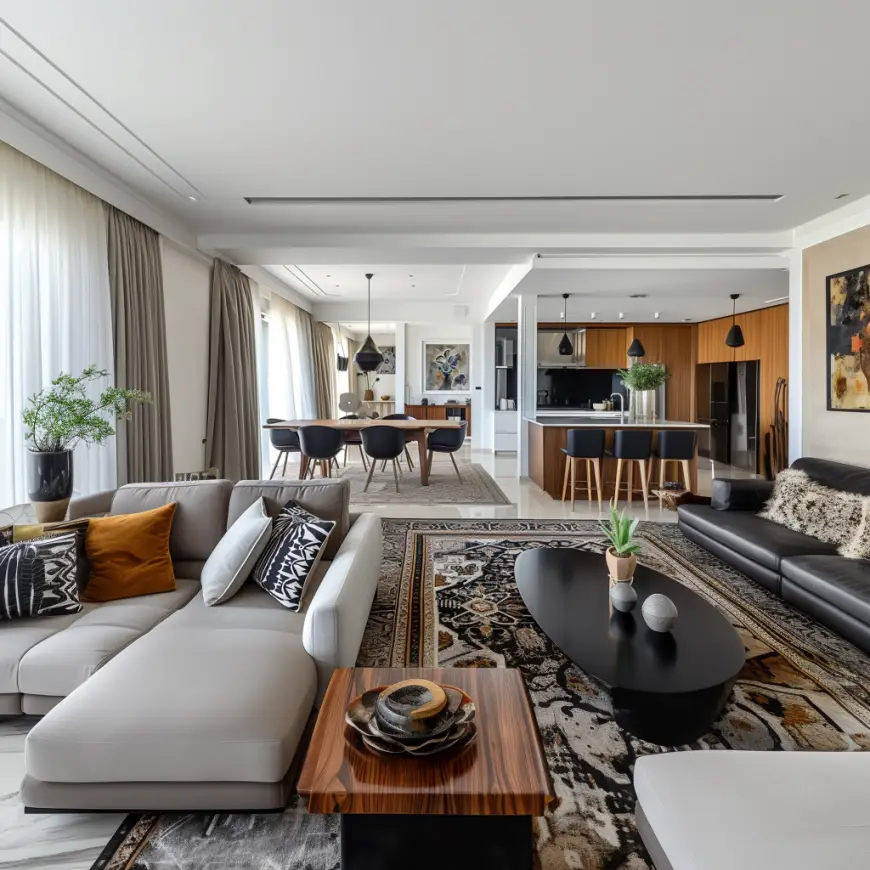

Case Study 3: A Renovated Historical Property
- Overview: A historical property that has been renovated to incorporate modern design elements while respecting its original character.
- Design Elements:
- Restoration of original Art Deco features like stained glass windows and ornamental moldings.
- Introduction of Bauhaus-inspired modern kitchen and bathroom fixtures.
- A blend of traditional Art Deco and contemporary Bauhaus furniture and decor throughout the house.
- Outcome: The property is a testament to the timelessness of both Bauhaus and Art Deco, demonstrating how historical structures can be adapted to modern living without losing their unique character.

Case Study 4: A Boutique Hotel Lobby
- Overview: The lobby of a boutique hotel designed to impress guests with a fusion of Art Deco glamour and Bauhaus practicality.
- Design Elements:
- A striking Art Deco-inspired reception desk set against a backdrop of minimalist Bauhaus architecture.
- Seating areas that combine functional Bauhaus chairs with plush Art Deco sofas.
- Statement lighting fixtures that marry the simplicity of Bauhaus with the drama of Art Deco.
- Outcome: The lobby presents a sophisticated and welcoming space, epitomizing the luxurious yet functional ethos of this hybrid design style.
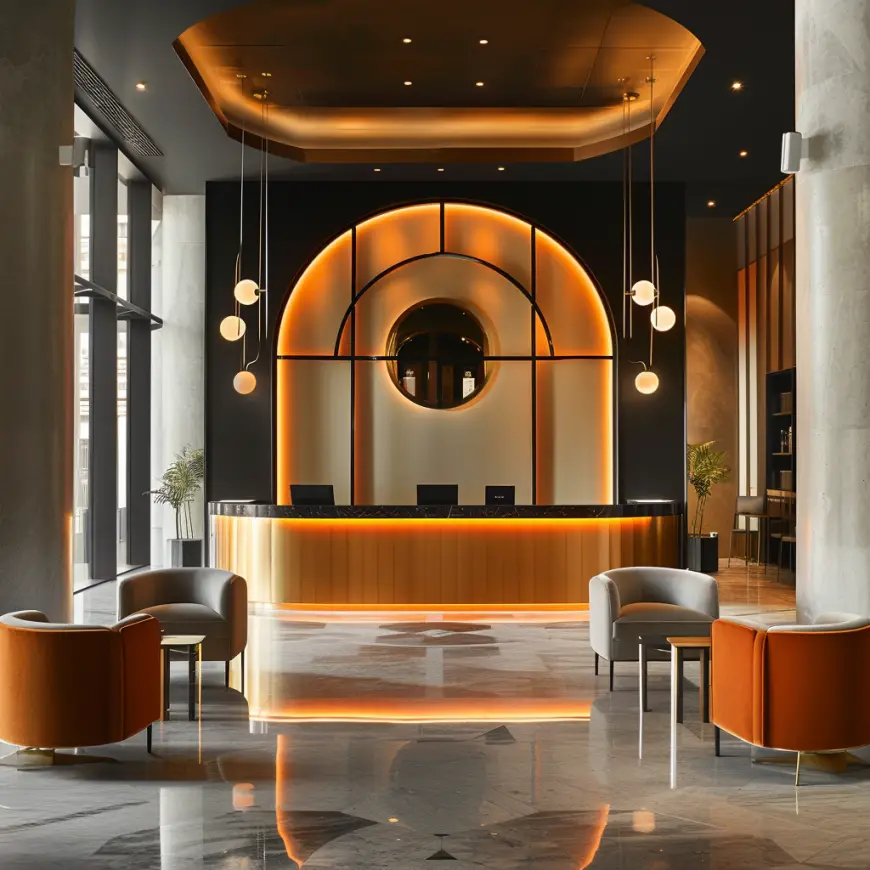
Conclusion
The journey through the realms of Bauhaus and Art Deco, and their amalgamation into a hybrid interior design style, reveals a world where functionality meets opulence, and minimalism dances with extravagance. This fusion is not just about blending two aesthetic movements; it’s a celebration of contrast, a testament to the idea that opposites can not only attract but also complement each other to create something truly extraordinary.
As we’ve seen through various case studies, whether in a compact city apartment or a sprawling suburban home, the key to mastering this hybrid style lies in understanding and respecting the core principles of each design philosophy. By thoughtfully selecting elements that speak to both the unadorned elegance of Bauhaus and the lavish intricacies of Art Deco, you can craft spaces that are both practical and luxurious, timeless and avant-garde.
Interior design is an ever-evolving art, continuously shaped by the fusion of different styles and eras. This exploration into combining Bauhaus and Art Deco encourages you to experiment, to step out of conventional design boundaries, and to create a home that is not just a living space, but a reflection of diverse artistic histories interwoven into your personal narrative.
As we conclude, remember that your home is your canvas. Don’t shy away from mixing and matching, from letting the structural simplicity of Bauhaus intertwine with the decorative richness of Art Deco. In this union, you’ll find a hybrid interior design style that is uniquely yours, echoing the voices of the past while whispering your own story.


